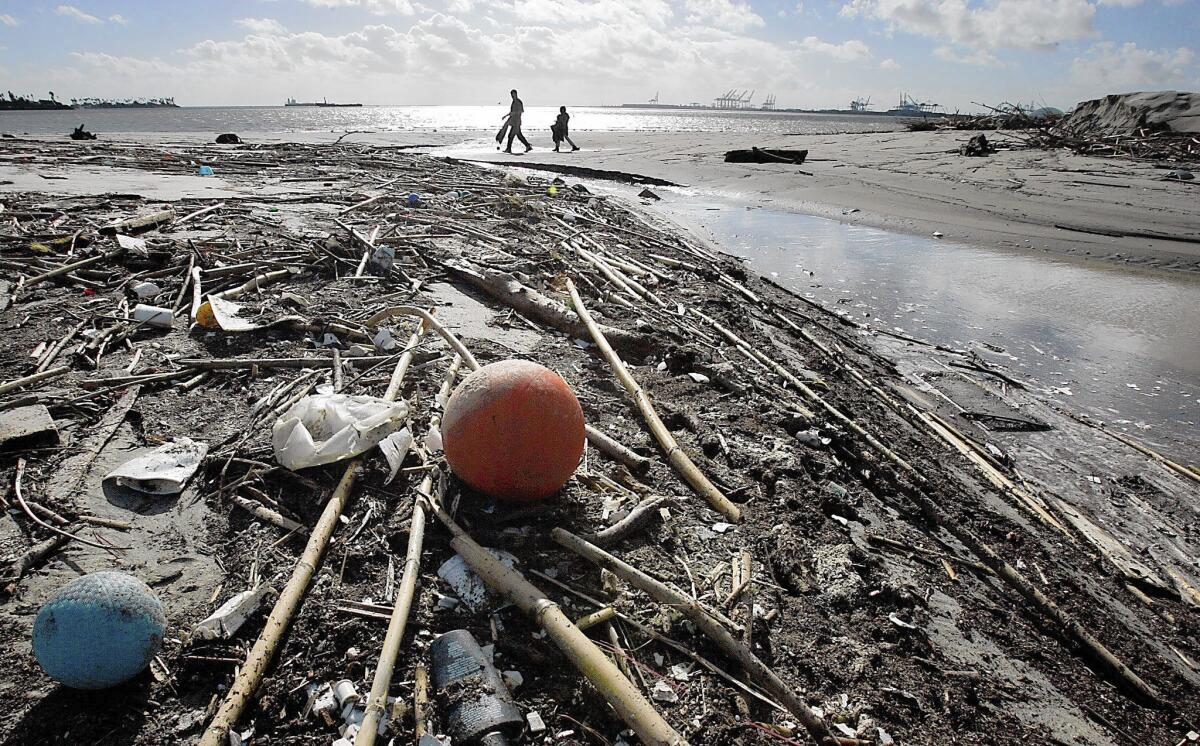Supreme Court favors environmentalists in urban runoff case

- Share via
The U.S. Supreme Court on Monday refused to review a long-running Los Angeles County case, handing a victory to environmentalists in a battle over polluted urban runoff that fouls Southern California’s coastal waters.
The justices let stand a federal appeals court ruling that held the Los Angeles County Flood Control District and the county liable for storm water pollution flowing into the Los Angeles and San Gabriel rivers from the region’s sprawling storm drain system.
The high court’s action does not end the case, however, which will now go back to the U.S. District Court in Los Angeles for further proceedings.
Despite the lack of finality, environmental attorney Steve Fleischli called the Supreme Court action “hugely significant.”
“The county can no longer deny these violations.... That conversation should now end and we can move toward actually solving this problem,” said Fleischli, water program director for the Natural Resources Defense Council.
Urban runoff is the leading cause of water pollution in Southern California. Water from winter storms and sprinkler runoff picks up a stew of contaminants as it washes over streets, yards and industrial sites into storm drains.
Bacteria from pet waste, copper from auto brake pads and pesticides all spike the runoff, which eventually flows into the ocean.
The NRDC and the environmental group Los Angeles Waterkeeper sued the county in 2008, arguing that it was violating water-quality standards in its storm water permit.
The county countered that it was not the source of pollution, which originates from thousands of sources all over the Los Angeles Basin.
The lawsuit has had a convoluted journey through the court system, including a previous decision by the Supreme Court that reversed a ruling against the county by the U.S. 9th Circuit Court of Appeals.
The 9th Circuit took the case up a second time, using a different legal theory to once again rule against the county. It was that opinion that the high court let stand Monday.
The U.S. District Court must now decide a remedy in the case, including which entities are legally responsible for the tainted runoff.
“There has been no finding” that the county and flood control district “are responsible for the contamination,” said Howard Gest, outside counsel for the county. He also pointed out that the lawsuit involves a 2001 storm water permit that was updated two years ago with a number of new conditions.
The 2012 permit, which applies to most cities in the county as well as the flood control district, set limits on 33 contaminants, including coliform bacteria, hydrocarbons and lead.
“We’re already working on that,” said Gary Hildebrand, assistant deputy director in the L.A. County Department of Public Works.
For instance, he said cities are adopting low-impact development rules that require large new projects to retain runoff on-site and let it seep into ground.
The county and cities are considering construction of regional infiltration basins to collect runoff to recharge aquifers. They also will encourage the use of green infrastructure, such as using permeable paving in parking lots at schools and other public facilities.







